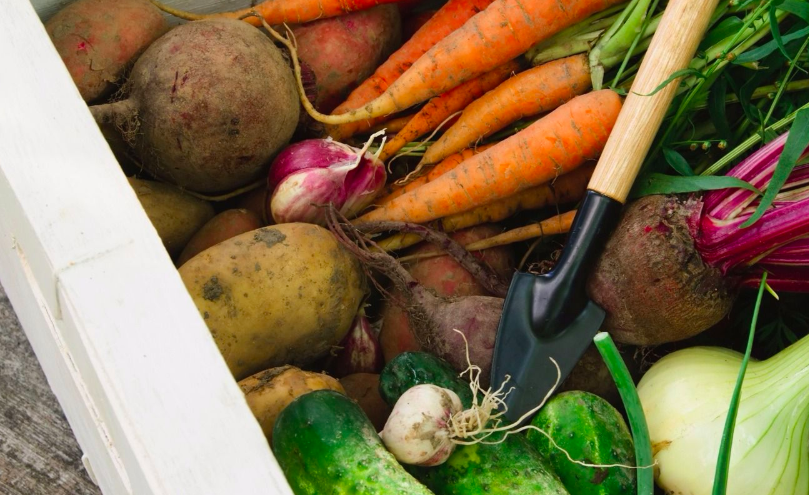How to grow vegetables, fruits and herbs in small spaces

If you don’t have a garden or allotment to grow your own produce, do not worry. John Harrison’s book Vegetable, Fruit and Herb Growing in Small Spaces reveals a number of really great gardening ideas to help you with homegrown vegetables, herbs and fruits. So whether you have a tiny patio or small balcony where you might need to do some vertical gardening, or a very small garden, John has all the answers, along with some great advice. He shows how you really can grow fresh tomatoes, peppers, cucumbers, strawberries, runner beans and herbs the traditional way or by container vegetable gardening or using raised beds. Whatever the a size of your garden, John is there to help you not give up on your dream and enjoy tasty home-grown produce, free of chemicals that the whole family can enjoy. Good luck and happy planting!
1) The Small Garden
i) The Patio – Not only is this useful to hold the annual summer barbeque, there’s also enough space to grow crops in pots.
ii) The lawn – As well as being a centre piece for the borders, depending on size, you might be able to use some of its space for crops.
iii) The borders – Perfect for displaying flowers, vegetables or a mix of both.
iv) The fence – Great for holding climbing plants or to train a range of fruit trees up.
2) Container Growing
If you don’t have the space for raised beds or have a garden covered in concrete, container growing is a great alternative – especially for salads, carrots and parsnips. You can buy containers from the garden centre, supermarkets or car boot sales. Always try to buy this towards the end of the season and check for small chips and marks to get a discount.
3) Grow bags
If you don’t have any pots, a grow bag is another great alternative and works well when planting salad crops. However, when growing tomatoes, peppers and aubergines, take some plastic pots and carefully cut out the base. Place the pots on the bag and using them as a template, cut circular holes into the plastic. Place the pots into the bag and fill with the contents of a second grow bag or multi-purpose compost. Oh – and don’t forget to make some draining holes in the grow bag!
4) Raised Beds
The ideal size for a raised bed is 10’ x 4’ but this isn’t set in stone.
– Use cheap materials like wood or empty wine bottles neck-end down to work as the edge of your bed. If using wood, make sure that it does not rot.
– Keep your corner posts slightly raised so as to stop hosepipes dragging over the beds.
– So as to allow air into the soil and maintain its structure, try not to tread on the beds.
For more great gardening advice read Vegetable, Fruit and Herb Growing in Small Spaces (Robinson) by John Harrison.







